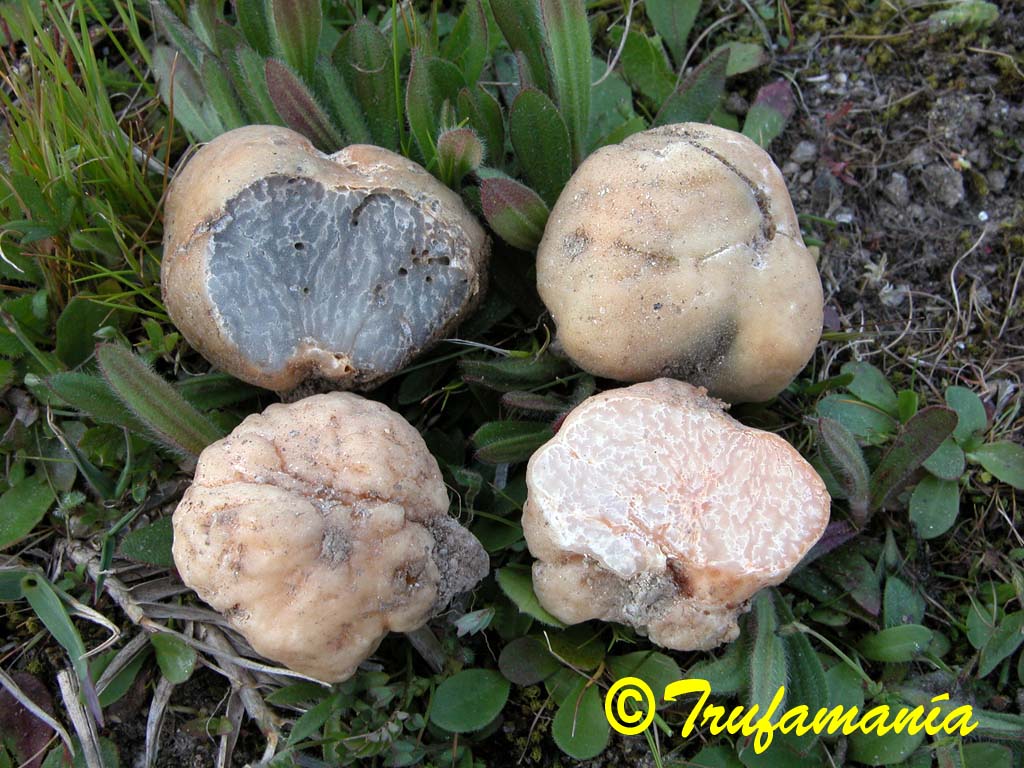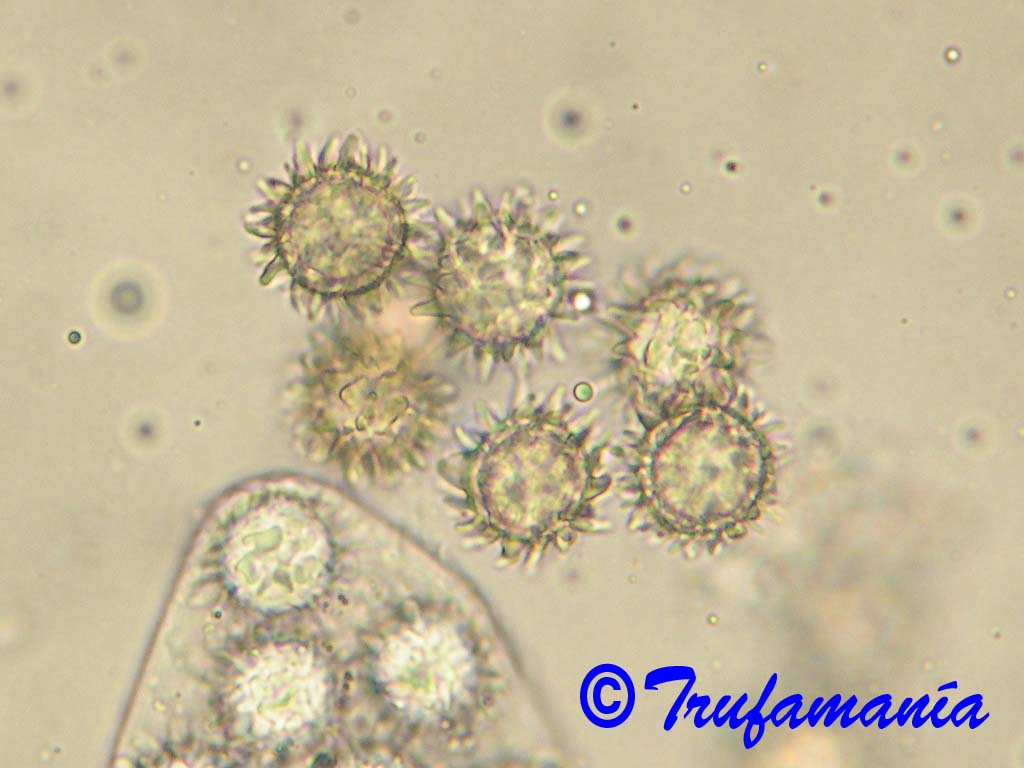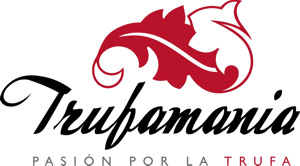TERFEZIA EXTREMADURENSIS Muñoz-Mohedano, Ant. Rodr. & Bordallo
Mycotaxon 124: 195 (2013)

(Click on the picture to see more images)
Macroscopic characters:
Ascomata: hypogeous to partially emergent at maturity, 2–5 cm in size, subglobose, sometimes furrowed and nodulose, often cracked, often with a small basal depression, rarely with pseudostipe, cream colour at first, becoming brown, black spots on the sun-exposed parts or where handled, smooth
Peridium: 300–600 µm thick, well-defined, concolorous with surface in cross section, pseudoparenchymatous, composed of subglobose cells, hyalines and thin-walled in the innermost layers, yellowish and with thicker walls in the outermost layers.
Gleba: solid, fleshy, succulent, whitish at first, soon becoming salmon pink, darkening with age, greenish gray at maturity, marbled with thin, white, meandering veins, sometimes arising from the base and inconspicuous in very mature specimens. Often with small holes indicating mycophagous activity.
Odour: faint, no distinctive
Taste: mild.
Distibution, Habitat and Season:
Widely distributed in the western half of the Iberian Peninsula, common in grassland of Extremadura in sandy, acid soils, associated exclusively with Tuberaria guttata, from late winter to early spring. Terfezia extremadurensis is the earliest terfezia to appear, in March, associated with Tuberaria guttata, followed by Terfezia fanfani and finally Terfezia arenaria
Comments:
Molecular analysis have shown several distinct clades within spiny spored Terfezia species with pseudoparenchymatous peridium. Terfezia extremadurensis differs from other spiny spored Terfezia species in its Tuber-like glebal morphology, with meandering veins of the gleba not completely surrounding the fertile tissue and not forming pockets, as all the other Terfezia species. Microscopically, Terfezia extremadurensis has the largest spores of the spiny spored Terfezia species, average spore size 22–26 µm including ornament, with the thickest spines, up to 3 µm wide at the base. Terfezia fanfani, shares the same habitat, but Terfezia extremadurensis lacks reddish tones and gleba is different. Microscopically, Terfezia fanfani has smaller spores, average spore size 19–22 µm, with thin spines, 1 µm wide at the base.

(Click on the picture to see more images)
Microscopic characters:
Asci: nonamyloid, subglobose to ovate, sessile or short-stipitate, 60–80 x 50–65 µm, walls 1–2 µm thick, with 6–8 irregularly disposed spores, randomly arranged in the gleba.
Ascospores: globose, (21–)22–26(–27) µm diam (median = 24 µm) including ornament, (16–)17–19(–20) µm (median = 18 µm) without ornament, hyaline, smooth and uniguttulate at first, by maturity yellow and ornamented with conical, blunt, thick spines, sometimes truncated, sometimes finger-like, often joined at the base, 3–4(–5) µm long, 1–3 µm wide at the base.
| Antonio Rodríguez trufamania@gmail.com antonio@trufamania.com |



